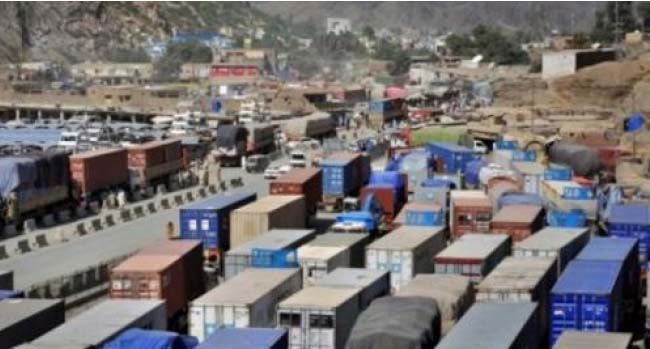Undoubtedly, there would be no clear economic outlook without unambiguous security strategy. The high number of civilian casualties, the collapse of the key provinces, the continued instability of Northern provinces, the rise of the Islamic State (ISIS) in the east, the progress of the Taliban toward the center of Helmand province and successive attacks on the major cities each forms the economic outlook in the country. However, Afghanistan greatly depends on its agriculture sector. Agricultural output shapes a significant portion of its Gross Domestic Product (GDP). But the country witnessed low yields, particularly of cereals, in 2016. The impacts of the poor security situation were exacerbated by adverse weather conditions and diseases, which constrained agricultural production.
According to World Bank estimates, 1.2 percent growth anticipated for post-2014 Afghanistan while the projections for the coming years are also not very hopeful; The World Bank estimates that Afghanistan’s growth rate is going to marginally increase to 1.8 percent in 2017 and to 3 and 3.6 percent in 2018 and 2019, respectively. This shows huge differences from the average growth rate of 9.4 percent sustained between 2003 to 2012, when Afghanistan’s economy was mainly driven by international troops and experienced relatively better security. For an economy with an average population growth rate of 3 percent and an estimated 400,000 individuals entering the labor market each year, such low growth is a very alarming situation. The situation will be further aggravated as the repatriation of Afghan refugees from Pakistan resumes in spring 2017.
On a brighter note, domestic revenue collection remained strong and continued the upward trend that started in 2015. The International Monetary Fund (IMF) had given a target of 140 billion Afghani ($2 billion) for the year. The government was able to collect revenues amounting to Afs 90 billion ($1.3 billion) in the first eight months of 2016, 30 percent higher than the reported figure for the same period in 2015. The improvement is partly due to improved tax administration, an increase in taxes on businesses, and a telecommunication fee of 10 percent on mobile top-ups.
The trade figures for the year 2016 continue recent trends in Afghanistan’s exports and imports. Imports have been in decline since 2014, due to a slowdown in economic activity following the enormous reduction in international troops, a sharp decline in international aid, and uncertainty about the post-2014 future of the country.
The import figure for the first half of 2016, $3.3 billion, was the lowest number since 2013. Imports in the first half of 2013 stood at $4.9 billion, which declined to $3.5 and $3.7 for the same time frame in 2014 and 2015, respectively. This implies a decline in domestic demand throughout this period. Afghanistan’s exports, on the other hand, saw a slight improvement, clocking in at $247 million for the first half of 2016, 10 percent higher than the first half of 2015. The jump is due in part to good fruit yields in the previous year, which were processed and exported in 2016.
More broadly, Afghanistan witnessed significant achievements last year in terms of regional integration, economic cooperation, and infrastructure development. In May, Afghanistan, Iran, and India signed the Chabahar port agreement. The arrival of first freight train in Afghanistan’s Hairatan port from China via Kazakhstan and Uzbekistan in November and inauguration of the Turkmen part of trilateral railway in Turkmenistan, which connected Afghanistan to an international railway network, were other significant steps in the right direction.
In the same context, another important achievement was Afghanistan’s formal admission to the World Trade Organization (WTO) in July. These developments will ensure easy, reliable, and cost-effective trade and transit opportunities for Afghanistan and the region. However, the expected gains of these projects will not be realized in short term.
In another achievement, the Salma Dam, which was inaugurated in June by Indian and Afghan leaders, was an important breakthrough in energy infrastructure development in Afghanistan. It has the capacity to produce 42 megawatts of electricity and irrigate 80,000 hectares of farmland.
Afghanistan’s economy has remained dependent on international aid since 2001. In this context, the Warsaw and Brussels conferences were crucial to ensure continued support until 2020. At these conferences, Afghanistan’s development partners pledged security grants of $4.5 billion and development support of $3.8 billion annually.
Despite the continued international support, the concern is that the country has not been able to utilize its development budget effectively. Annual reports from the Ministry of Finance (MoF) reveal alarming figures about the poor execution rate, only about 35 percent, of the $2.9 billion development budget. These disappointing figures spurred anger among Afghan parliamentarians, which resulted in the dismissal of seven ministers last year. Afghanistan’s national budget was approved by Parliament in January 2017; however, the underlying reasons for poor budget execution remain uninvestigated and unaddressed.
Yet, there is little evidence to suggest promising outlook in the Afghan economy for the coming years. The security situation in the country will determine the amount of private investment, the business atmosphere, and the rate of project implementation. Meanwhile, good snow, rains, and the resulting higher crop yields will allow the agriculture sector to play its due role in the economy.
The scourge of unemployment will continue to haunt the public and the government alike. Major national projects like Citizen Charter and the traditional quick fix approaches like cash-for-work, apprenticeships, and internship programs funded by donors might make up for unemployment to some extent. However, unless the government takes exceptional steps to improve the security situation, restore trust from the private sector, and significantly improve its budget execution rate, the crises will be intensified in the coming years.

